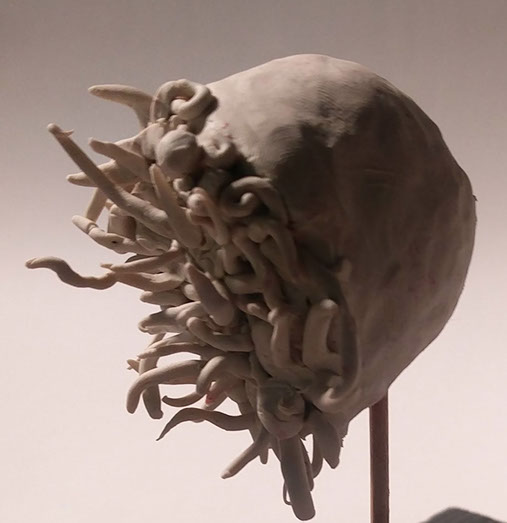Species: Scrippsia pacifia
Student: Derya Botsali
Information:
Scrippsia pacifia is a unique species of jellyfish and zooplankton. It can be seen in Baja California to Northern California and it lives in surface deep water. A scripssia pacifia can grow up to 100 mm bell diameter. This type of jellyfish has quite an unusual form; it has a bell-shaped umbrella that carries 256 tentacles in 7 cycles and a shiny structure inside that transparent umbrella.
Scrippsia pacifia is a hydroid polyp (individually tiny predatory animals that live in salt water) from the family Corynidae. This species closely resembles Polyorchis penicillatus (another species of jellyfish with a large bell and numerous tentacles), although it can reach a larger size. Commonly called the giant bell jelly.
Jellyfish are small and simple creatures, which are fun to look at, but most importantly, they have a very vital role in the maintenance of the balance in the ecosystem of the ocean; they have a direct effect on the food chain under the water. Jellyfish usually act as food or snacks to other species such as sea turtles, sunfish, spadefish, crabs, and even people in some places. Nevertheless, just like any other living being, jellyfish also love to eat; the stomach compartment of their structure needs to be filled often and enough. They however cannot hunt, so they wait for their potential food to float by and reach to it with their tentacles. The tentacles are their secret weapons: they have stingers, which are used to “hunt” the food. Small jellyfish eat algae and little zooplankton, whereas larger jellyfish eat bigger zooplankton and shrimp. An interesting fact is that jellyfish eliminate waste from the same place they consume their food; the mouth of a jellyfish acts as a waste-disposal system as well. As mentioned before, jellyfish are very simple creatures that eat some species to control their population, but are also eaten themselves.
BIBLIOGRAPHY
Scripps Institution of Oceanography. “Zooplankton Guide: Scrippsia Pacifia.” Archive.today. https://scripps.ucsd.edu/zooplanktonguide/species/scrippsia-pacifica . Accessed 30 January 2018.
“The Importance of Jellyfish in the Oceans Food Chain.” Act For Libraries. http://www.actforlibraries.org/the-importance-of-jellyfish-in-the-oceans-food-chain/ . Accessed 30 January 2018.
